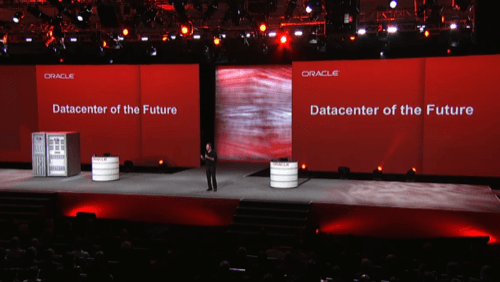
Twitter is off to a roaring start this week, closing 70% higher than its IPO price on its first day of trading. This bodes well for Twitter investors, but it may not do any favors to the traditional technology vendors that have minted billions servicing enterprise IT requirements. After all, while Oracle and other technology incumbents like to boast about how “the top five of five mega banks rely on our technology,” in the age of the web giants, the scorecard looks more like “Zero out of all web companies depend upon our technology.”
Are we seeing a changing of the technology guard?
Modern Data Infrastructure: Hadoop And Beyond
According to Cowen & Co. analyst Peter Goldmacher, the answer is “Yes.” While new technologies like Hadoop in some cases simply sustain legacy technology businesses, there is a whole class of applications enabled by such modern data infrastructure that is beyond the legacy vendors. In true Innovator’s Dilemma fashion, they simply make too much money sustaining yesterday’s application workloads to be able to invest fully in modern applications. Quoting Goldmacher at length:
The legacy providers of data management systems have all fallen on hard times over the last year or two, and while many are quick to dismiss legacy vendor revenue shortfalls to macroeconomic issues, we argue that these macroeconomic issues are actually accelerating a technology transition from legacy products to alternative data management systems like Hadoop and NoSQL that typically sell for dimes on the dollar.
We believe these macro issues are real, and rather than just causing delays in big deals for the legacy vendors, enterprises are struggling to control costs and are increasingly looking at lower cost solutions as alternatives to traditional products. What we are gleaning from multiple conversations with users of these new technologies is that regardless of the initial reason they experiment with these new technologies, the outcome is 1) The realization that not only are these products cheaper, but they are more flexible and better suited to many legacy workloads and 2) They offer end users the optionality to expand project scope beyond the constraints associated with legacy product, whether those constraints are cost or capabilities.
Such data infrastructure was born on the web, hatched in the bowels of web giants like Google, Facebook and Twitter. Each of these companies depends upon commodity servers running open-source technology, some of which they build, some of which they download and modify.
None of it comes from a legacy technology vendor.
One Out Of One Oracle CEOs Agrees
You may not agree with Goldmacher. And it’s easy to suggest that I’m just biased (I work for a NoSQL vendor, after all).
So don’t listen to either of us. Listen to the grandfather of data, Oracle CEO Larry Ellison: Ellison said much the same thing in his Oracle OpenWorld keynote. Even if you listened to his keynote, you can be forgiven for not noticing a huge concession he made to the world of modern data infrastructure. After all, he didn’t get around to saying it until the last few sentences of his keynote. Starting at at about minute 50, Ellison finally gets interesting:
What we think the data center of the future looks like is really a core of these commodity machines [i.e., commodity Linux servers not powered by Oracle] and a collection of these purpose-built machines [like Oracle’s Exadata that serve higher-end requirements].
Did you catch that? The CEO of the world’s largest software company thinks the core of the data center is someone else’s business. That’s huge.
The Future Is Open
Twitter has given us Storm and a range of other great open-source software. What it’s not giving out is a big check to SAP, Microsoft or the other incumbent technology vendors.
And while it’s fair to say that the web giants can afford to spend their IT budgets building open source rather than buying, but mainstream enterprises don’t have that luxury, it’s also fair to note that these same mainstream enterprises are investing more and more in the same open-source technologies that Goldmacher highlights as a drag on the incumbent technology vendors.
This doesn’t mean we’ll see exceptional companies like Oracle go out of business. But it does suggest, like Ellison himself argues, that we’re likely to see the legacy vendors take an increasingly peripheral role in an age of Twitter.










